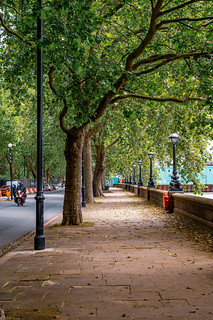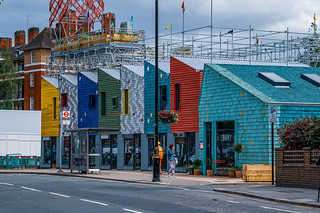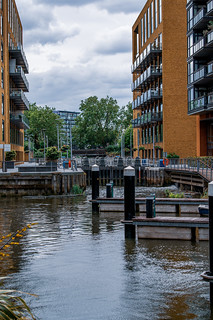Grosvenor Canal was a canal in the Pimlico area of London, opened in 1824. It was progressively shortened, as first the railways to Victoria Station and then the Ebury Bridge housing estate were built over it. It remained in use until 1995, enabling barges to be loaded with refuse for removal from the city, making it the last canal in London to operate commercially. A small part of it remains within the Grosvenor Waterside development.
In the early eighteenth century, there were marshes and a tidal creek on the north bank of the Thames near Pimlico. The Chelsea Waterworks Company obtained an Act of Parliament in 1722; they were authorised to take water from the Thames via one of more "Cutt or Cutts". These fed the water into the marshes, and a tide mill was used to pump the water to reservoirs at Hyde Park and St James's Park as the tide ebbed. The reservoirs supplied west London with drinking water. The land between the river and the later site of Victoria Station was owned by Sir Richard Grosvenor, who leased it to the company in 1724. They enlarged the existing creek and built the tide mill, which continued to work until 1775, after which the pumping was performed by a steam engine.
In 2000 planning permission was granted to turn the dock site into high end housing known as Grosvenor Waterside. Although there is no access to boats, the development has included an operational swing bridge over the lock, and the inner dock has been refurbished to include mooring pontoons.
en.wikipedia.org






















